Injection Moulding Machines
Our advantage:
- 1.Save injection molding costs
- 2.Improve production efficiency
- 3. Increase product profits
- 4. Improve product qualification rate
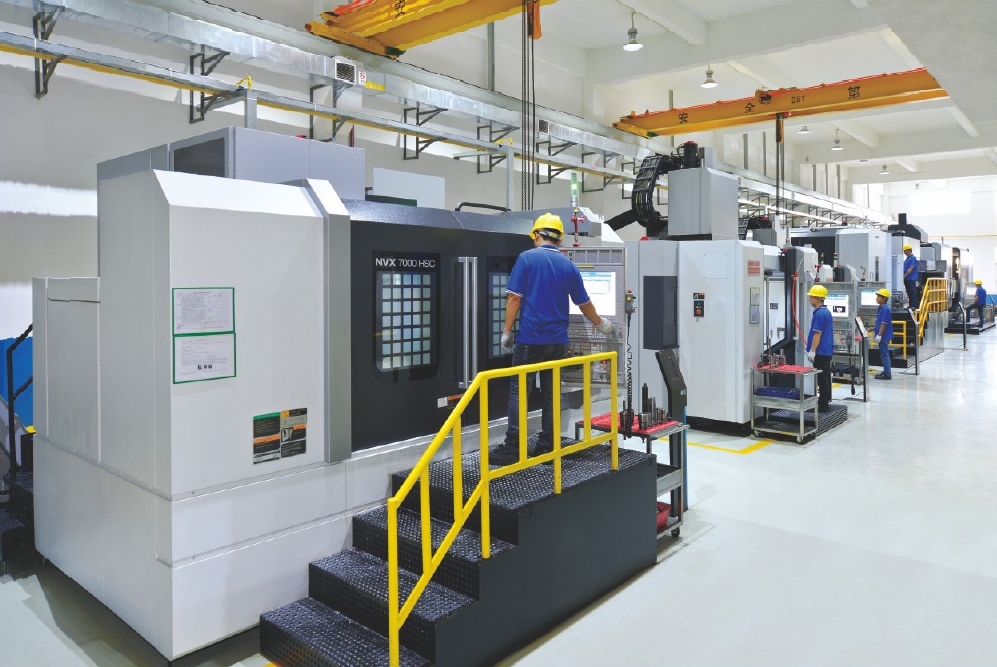
Injection Molding Machines Advantage
Traditional injection molding machines require different drying times before raw materials are put into production. The exhaust type injection molding machine eliminates the need for a separate device outside the injection molding machine to perform a separate drying operation, integrates the input of raw materials into the output of the product, and reduces the number of production operations, making the production of plastic products more efficient and convenient. At the same time, the vented injection molding machine eliminates the need for separate drying outside the machine, eliminating the potential safety hazards associated with the original drying process, and eliminating the potential risk of fire due to improper operation in the drying process. Safety is further guaranteed. At the same time, the volatile gas generated during the melting process of the raw material is discharged. In addition, the exhaust injection molding machine also further implements the new development requirements of energy saving and high efficiency.
Machining Center Manufacturing Workshop
The company has introduced international advanced production equipment and has built advanced automated production lines, etc., to ensure that the products produced have good stability, fast production efficiency and high precision, and improve the manufacture of first-class products by optimizing the process, in order to create a first-class enterprise and establish an industry brand Foundation.
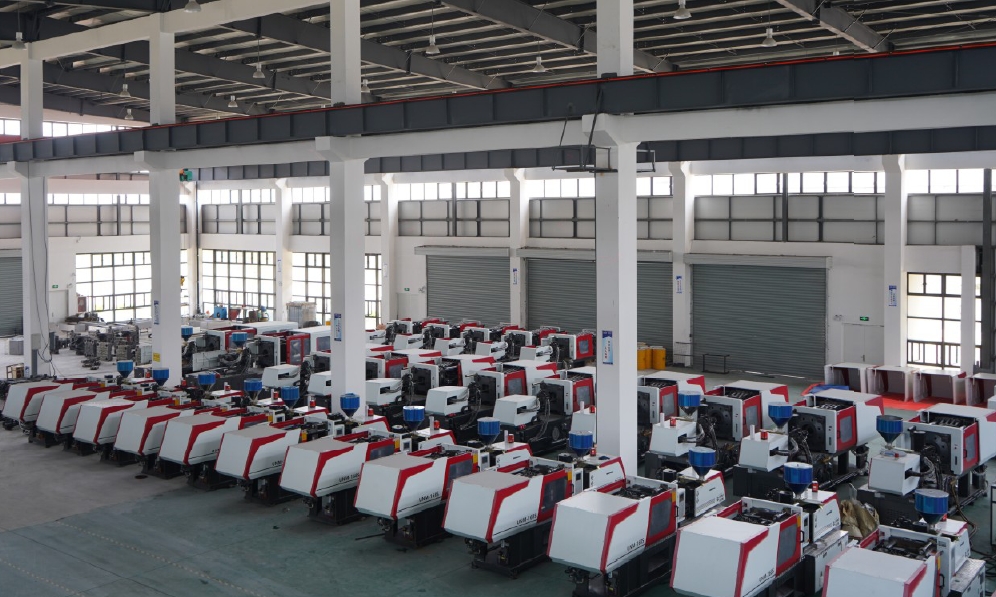
Disadvantage Of Traditional Hydraulic Injection Molding Machine
The drying process requires a lot of power consumption, which is inconsistent with my country's national policy of energy conservation and environmental protection.
The raw materials of drying plastic products need to be equipped with relevant auxiliary machines for drying, and most of the auxiliary machines are expensive, which compresses the profit space.
The drying process will generate a large amount of dust, which will cause dust pollution in the workshop, and also affect the surrounding environment of the factory, which also threatens the health of workers in the workshop.
The traditional production mode has great security risks. In the process of drying raw materials, if the heat generated cannot be dissipated into the air in time, or the air circulation is poor, and the drying time is too long, it is very easy to cause fire and bring irreversible losses to the manufacturer.
The drying process of raw materials requires precise manual control. If the drying time is too short, traces will be left on the surface of the product (called "splashes" in the industry), and if the drying time is too long, the produced products will turn yellow and discolor, reducing product quality and appearance.
Drying requires a lot of time investment, which increases the production time of the product and the production cycle. affect production efficiency. If a holiday ends, and workers start to bake materials during the working day, the production of products can only be carried out in the second half of the working day, which will wasted workers' working hours and reduce production efficiency.
Exhaust Injection MoldingMachine Process Flow Chart
- 1.Add Moisture To Plastic
- 2.Exhaust Screw High Temperature Extrusion Stirring
- 3.Exhaust Device Releases Water Vapor
- 4.Moisture Separation In Plastics
- 5.Moisture-Free Plastic Flows Out Of The Nozzle
- 6.Injection Mold
Injection Moulding Machine Application Cases
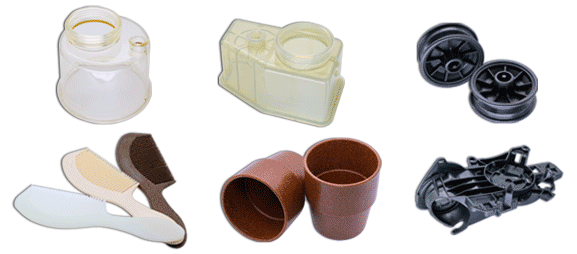
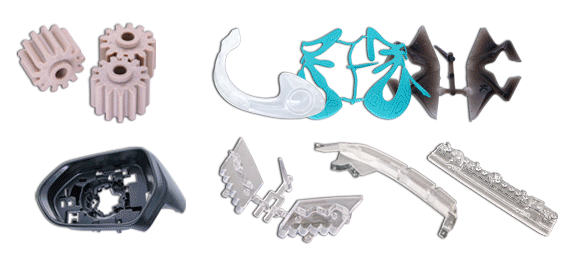
V1 Injection Moulding Machine Specifications
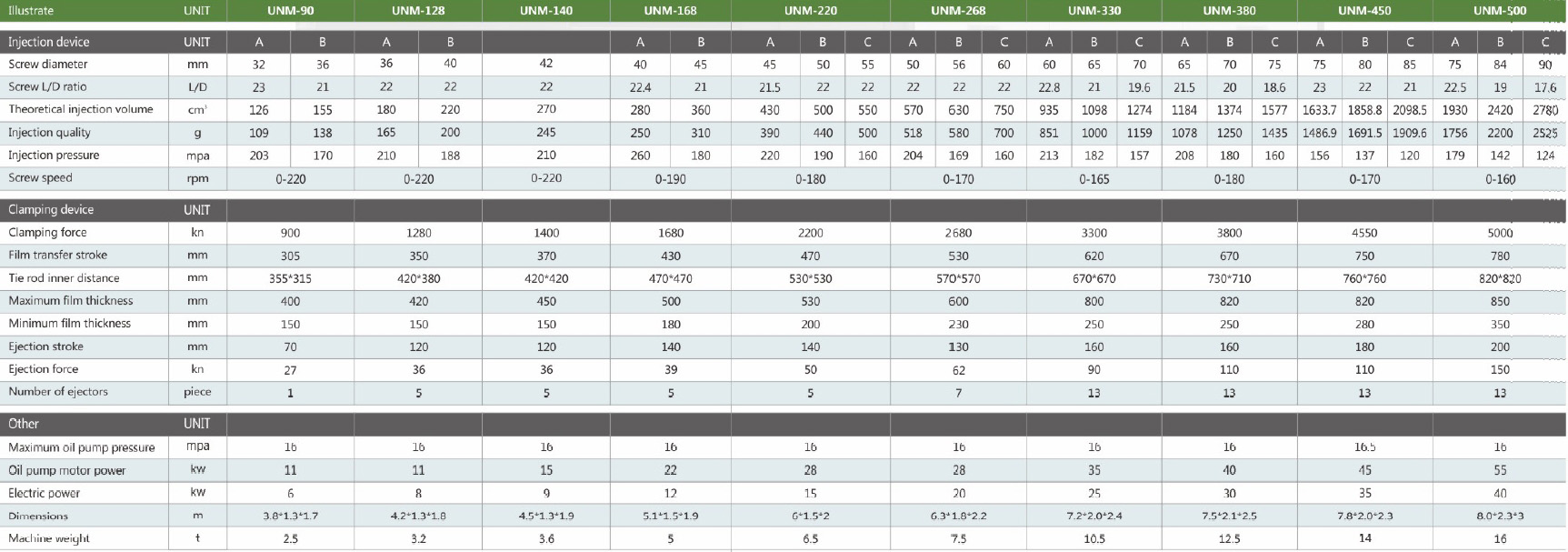
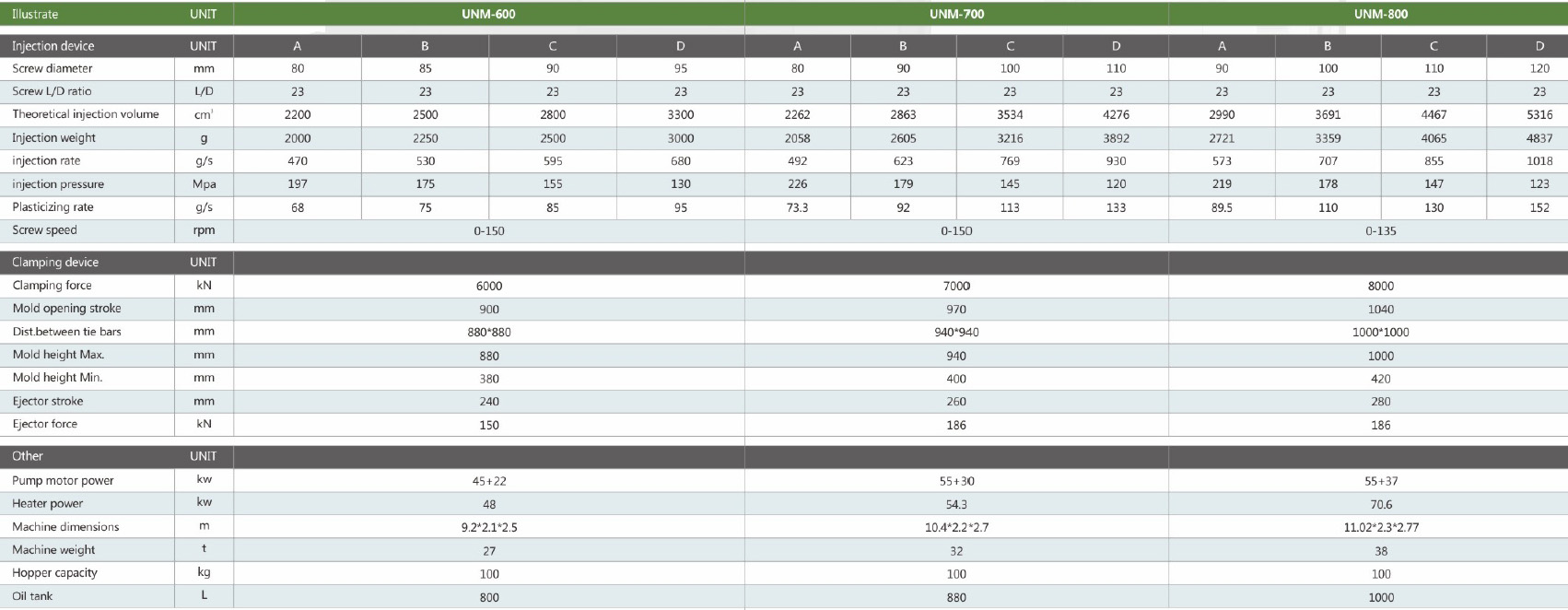
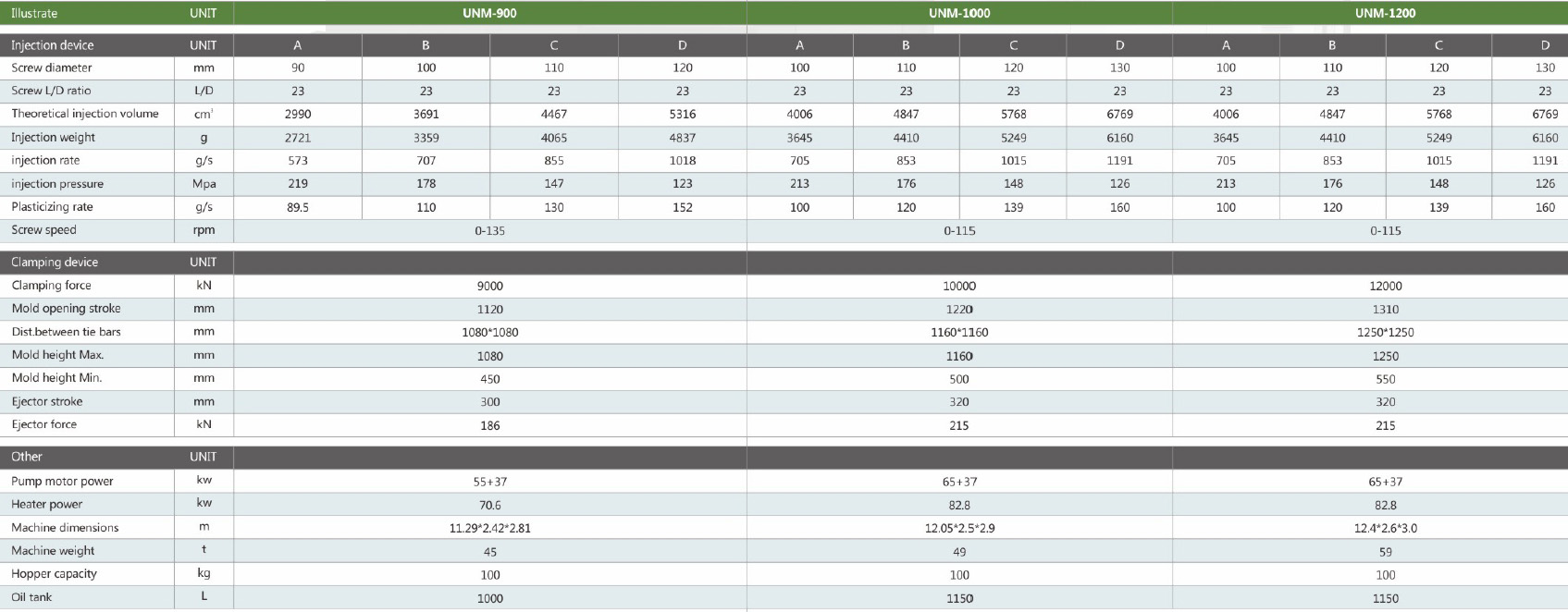
The Future Of Injection Molding Machine
People around the world pay more and more attention to energy conservation and environmental protection, and my country has also introduced relevant national policies for energy conservation and emission reduction. The emergence of the non-baking injection molding machine is just to adapt to this trend of the times and the trend of the times. While the traditional injection molding machine is trapped by its own shortcomings and the social trend of pursuing more efficient and high-tech products, it is in trouble. The injection molding machine has become an eyecatching new thing in the injection molding machine market with its sustainable development purpose and high-tech content. According to the concept of high efficiency, energy saving and environmental protection that we are pursuing in the production process, the popularity and growth of non-baking injection molding machines are inevitable and inevitable. At present, the traditional injection molding machine production industry and the manufacturing of plastic products are in urgent need of non-baking injection molding machines.
Injection Moulding Machine FAQs
An injection moulding machine is a manufacturing device that is used to produce plastic parts by injecting molten plastic material into a mould. It is a versatile and widely used machine in the plastic manufacturing industry.
An injection moulding machine consists of several main components, including:
- Hopper: It holds the plastic material before it is fed into the machine.
- Screw or Plunger: It is responsible for melting and injecting the plastic material into the mould.
- Barrel: It houses the screw or plunger and provides the necessary heat for melting the plastic.
- Heating Unit: It heats the barrel to maintain the desired temperature for plastic melting.
- Mould: It forms the shape of the plastic part and consists of two halves, the cavity and the core.
- Clamping Unit: It holds the mould halves together and applies the necessary force to keep them closed during injection.
- Control System: It manages and controls the machine's operation, including temperature, pressure, and timing.
There are several types of injection moulding machines available, including:
- Hydraulic Injection Moulding Machines: These machines use hydraulic systems to generate the necessary pressure for plastic injection.
- Electric Injection Moulding Machines: They utilize electric servo motors for the injection process, providing precise control and energy efficiency.
- Hybrid Injection Moulding Machines: These machines combine hydraulic and electric components to optimize energy consumption and performance.
The operating temperature range of an injection moulding machine depends on the type of plastic being used. Generally, the temperature range is between 150°C and 300°C. However, specific plastics may require higher or lower temperatures for optimal processing.
Injection moulding machines can process a wide range of materials, including thermoplastics (e.g., polyethylene, polypropylene, polystyrene), thermosetting plastics (e.g., phenolic, epoxy), elastomers (e.g., rubber), and certain metals (e.g., powdered metals for metal injection moulding).
Injection moulding machines are used in various industries for manufacturing a wide range of products. Some common applications include automotive parts, such as bumpers and interior components; consumer goods, including toys and household appliances; electronic components, like connectors and casings; medical devices, such as syringes and IV components; and packaging materials, including bottles and containers.
The injection moulding process offers several advantages over other manufacturing processes. It allows for high-volume production of complex shapes with tight tolerances and excellent surface finishes. Unlike processes like machining or casting, injection moulding does not require extensive post-processing. Additionally, it offers faster production cycles and can be highly automated for increased efficiency.
The advantages of using an injection moulding machine include:
- High Production Efficiency: Injection moulding machines can produce large quantities of parts with minimal cycle times, resulting in high production output.
- Design Flexibility: The process allows for the production of complex geometries, intricate details, and precise dimensions.
- Material Versatility: Injection moulding machines can process a wide range of plastic materials, offering flexibility in material selection.
- Cost-Effective: Once the initial mould is created, the per-unit cost decreases significantly with high-volume production.
- Minimal Material Waste: The injection moulding process generates minimal material waste compared to other manufacturing methods.
While injection moulding offers numerous advantages, it also has some limitations, including:
- High Initial Investment: Injection moulding machines can be costly to acquire and set up, which may pose a barrier for small-scale production.
- Skilled Operators: Operating an injection moulding machine requires skilled operators who understand the process, tooling, and machine settings
- Limited Flexibility for Small Production Runs: Injection moulding is most cost-effective for high-volume productionruns due to the initial cost of creating the mould. It may not be suitable for small production runs or prototype development.
- Material Limitations: While injection moulding can process a wide range of materials, certain materials with high melting points or corrosive properties may not be suitable for the process..
- Design Constraints: Some complex part designs may be challenging to mould, requiring additional considerations such as draft angles, undercuts, or multiple-part moulds.
Selecting the right injection moulding machine involves considering several factors, including:
- Part Size and Complexity: Determine the required clamp force, shot size, and mould dimensions to ensure the machine can accommodate the desired part.
- Production Volume: Assess the expected production volume to determine the appropriate machine size and production capabilities.
- Material Compatibility: Consider the type of material to be used and ensure the machine is compatible with the required plastic or other materials.
- Budget: Evaluate the cost and return on investment based on the machine's capabilities and the projected production volume.
Common Question In Injection Molding Machine
The working principle of an injection moulding machine involves several steps. First, plastic pellets or granules are fed into a hopper. The material is then heated and melted in a barrel using a rotating screw or a plunger. Once the plastic is in a molten state, it is injected into a mould cavity under high pressure. The plastic cools and solidifies inside the mould, and then the mould opens, allowing the finished part to be ejected.
Safety is paramount when operating an injection moulding machine. Some important safety precautions include:
- Operator Training: Ensure that operators are properly trained in the operation of the machine, including safety procedures and emergency protocols.
- Personal Protective Equipment (PPE): Operators should wear appropriate PPE, including safety glasses, gloves, and protective clothing.
- Machine Guarding: Install safety guards and interlocks to prevent access to moving parts during the machine's operation.
- Lockout/Tagout (LOTO): Follow lockout/tagout procedures to safely isolate the machine from power sources during maintenance or repair.
- Ventilation: Provide adequate ventilation to remove fumes or vapors generated during the melting and moulding process.
The frequency of servicing an injection moulding machine depends on factors such as the machine's usage, operating conditions, and manufacturer recommendations. Regular maintenance and inspections are typically performed at scheduled intervals, which can range from daily checks for critical components to monthly or yearly maintenance tasks. It's important to follow the manufacturer's guidelines and keep a maintenance log to ensure the machine's optimal performance.
Injection moulding machines can encounter various troubleshooting issues, including:
- Injection Problems: These include issues with material flow, such as short shots, flash, or sink marks, which may be caused by incorrect temperature, pressure, or injection speed settings.
- Moulding Defects: Defects like warping, voids, or surface imperfections can occur due to mould design issues, incorrect material selection, or inadequate cooling.
- Machine Malfunctions: Mechanical or electrical problems, such as hydraulic leaks, sensor failures, or control system errors, can affect the machine's performance.
- Temperature Control: Inaccurate temperature control can lead to inconsistent part quality or processing difficulties.
- Hydraulic System Issues: Problems with the hydraulic system, such as low oil level or contaminated oil, can impact the machine's operation.
The typical lifespan of an injection moulding machine can vary depending on several factors, including the machine's quality, usage, maintenance, and technological advancements. Generally, a well-maintained machine can last for 10 to 20 years or more. However, it's important to consider factors such as wear and tear of critical components, availability of spare parts, and advancements in technology that may render older machines less efficient or cost-effective.
Yes, injection moulding machines can be used for prototyping purposes. Prototypes can be created by either making prototype moulds or by using rapid tooling techniques. Prototype moulds are less expensive than production moulds and allow for the production of functional prototypes that closely resemble the final product. Rapid tooling techniques, such as 3D-printed moulds or soft tooling, can also be used to produce prototypes quickly and cost-effectively.
The cycle time for an injection moulding machine is calculated by adding the various stages of the moulding process. These stages include the cooling time, mould opening and closing time, injection time, and any additional time required for part ejection or secondary operations. The cycle time calculation is essential for determining production capacity and optimizing efficiency.
utomation plays a significant role in injection moulding machines, offering several benefits, including:
- Improved Production Efficiency: Automation reduces manual labor, increases throughput, and enables continuous operation, leading to higher production efficiency.
- Enhanced Precision and Consistency: Automated systems ensure accurate and repeatable processes, minimizing human errors and variations in part quality.
- Increased Productivity: Automation allows for faster cycle times, reduced downtime for manual interventions, and the ability to run the machine 24/7.
- Cost Savings: Automation reduces labor costs, improves material utilization, and minimizes scrap and rework.
- Safety: Automation can handle repetitive or hazardous tasks, protecting operators from potential injuries.
- Data Collection and Analysis: Automated systems can collect and analyze data in real-time, providing insights for process optimization, predictive maintenance, and quality control.
The future of injection moulding machines is likely to involve advancements in several areas:
Industry 4.0 Integration: Injection moulding machines will be increasingly connected to digital systems, enabling real-time monitoring, remote control, and data-driven decision-making.
Smart Manufacturing: Artificial intelligence and machine learning algorithms will be employed to optimize machine settings, predict and prevent failures, and improve overall efficiency.
Energy Efficiency: Continued efforts will be made to develop energy-efficient machines by leveraging advanced technologies, such as servo-electric drives and regenerative systems.
Material Innovation: New materials with improved properties, such as biodegradable or bio-based plastics, will expand the possibilities for injection moulding applications.
Additive Manufacturing Integration: The integration of injection moulding machines with additive manufacturing technologies will enable hybrid manufacturing processes and the production of complex parts with localized customization.
Automation and Robotics: Automation and robotics will play an even more significant role, with advancements in collaborative robots (cobots) and adaptive automation for increased flexibility and productivity.
Staying updated with the latest developments in injection moulding machines can be achieved through various means:
- Industry Publications and Websites: Subscribe to industry magazines, journals, and websites that cover topics related to plastic manufacturing, injection moulding, and machinery advancements.
- Trade Shows and Exhibitions: Attend trade shows and exhibitions focused on plastics and manufacturing technologies, where leading machine manufacturers showcase their latest innovations.
- Online Communities and Forums: Join online communities and forums dedicated to injection moulding or plastic manufacturing, where professionals and enthusiasts share knowledge, experiences, and updates.
- Manufacturer Updates: Follow injection moulding machine manufacturers' websites, newsletters, and social media accounts to receive direct updates on their latest product releases and technological advancements.
- Continuous Learning: Invest in professional development by attending training programs, workshops, or webinars offered by industry associations, educational institutions, or machine manufacturers themselves.
